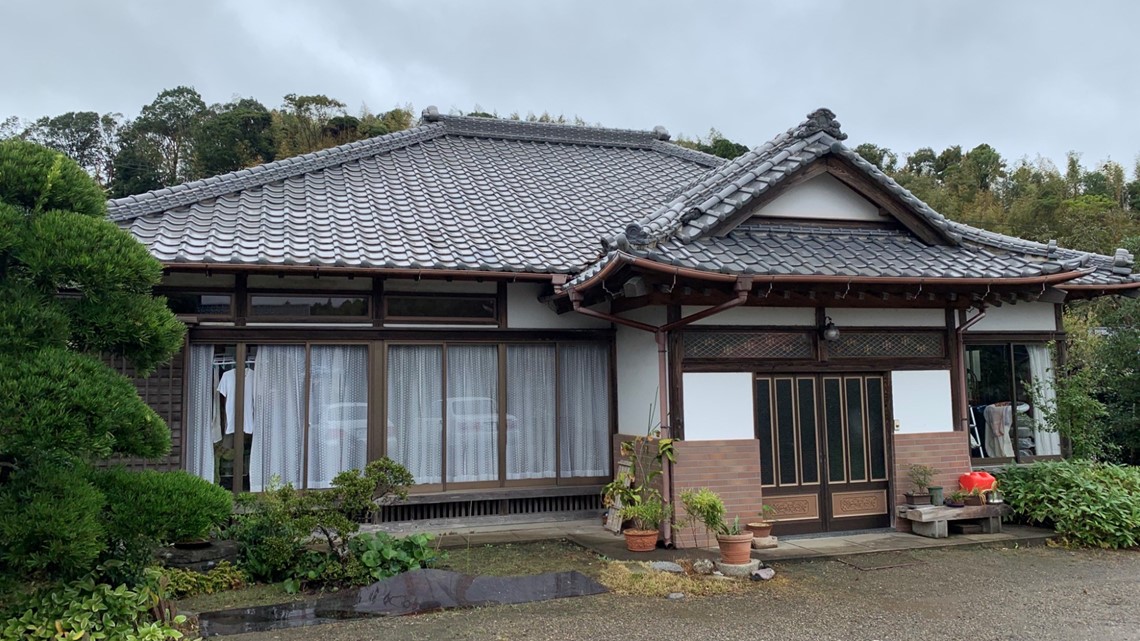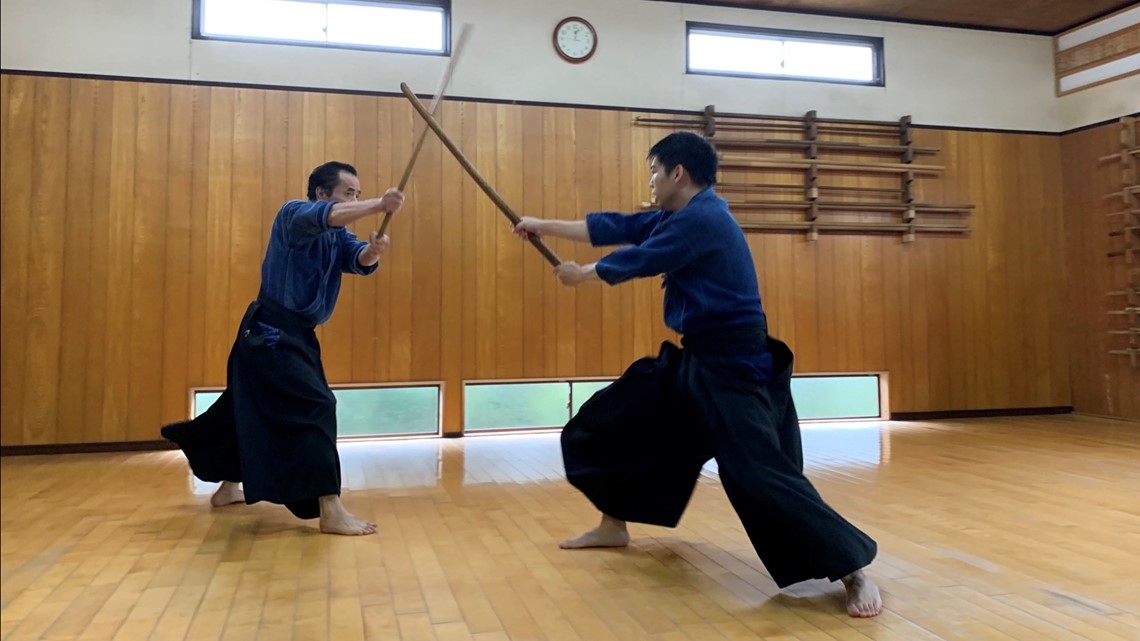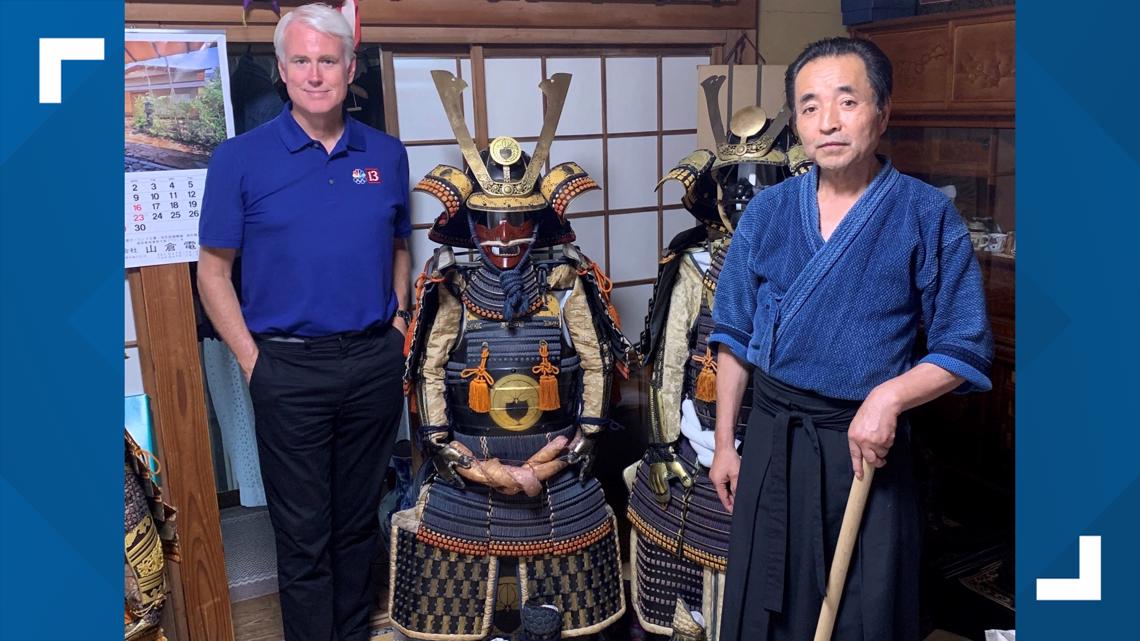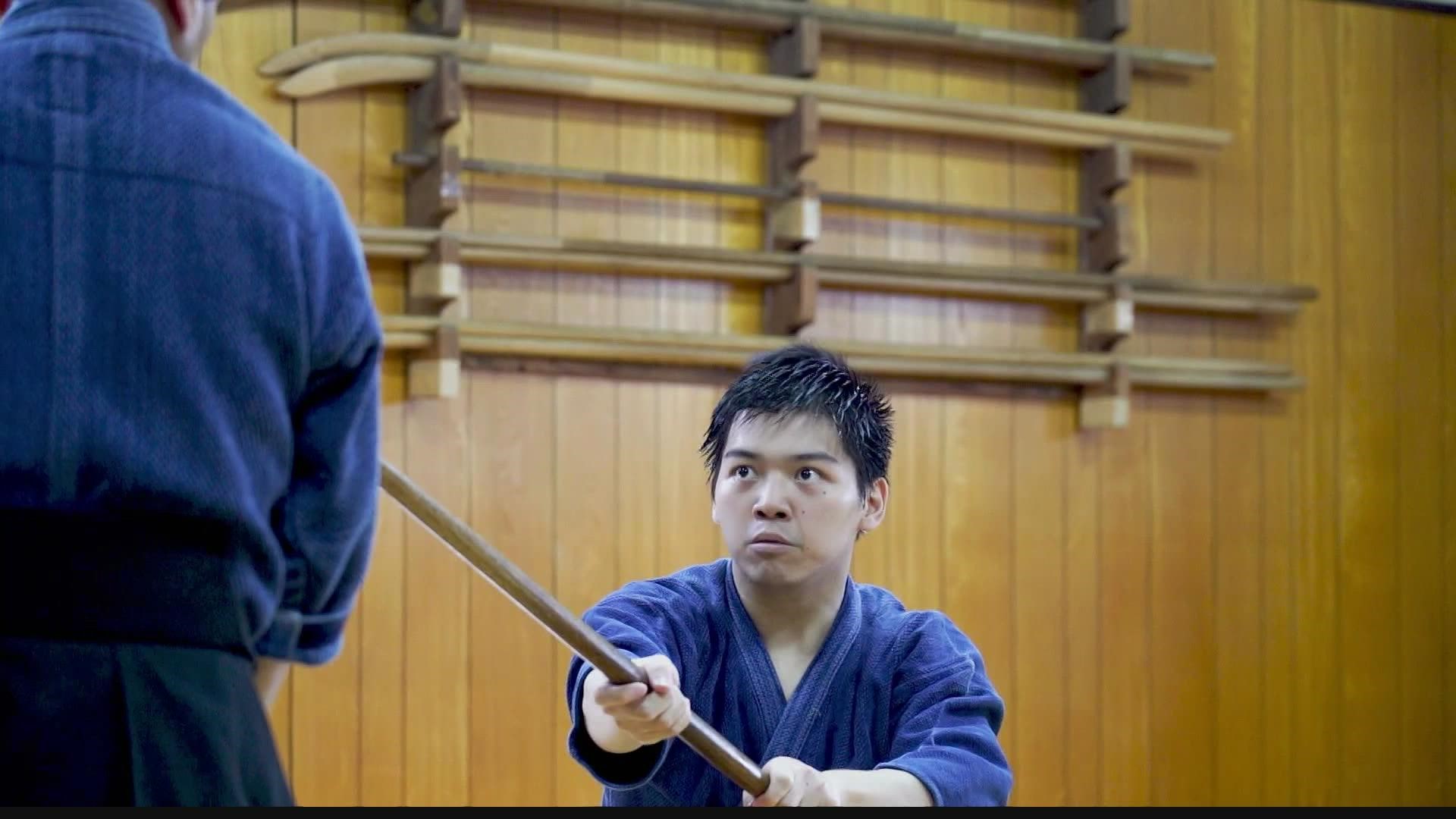TOKYO, Japan — In Narita City, just east of Tokyo, one of the oldest Japanese martial arts skills is still being taught.
"This teaching is called Tenshin Shoden Katori Shinto-ryu," said Otake Risuke. "The founder of this school was born around 1400 in Chiba prefecture, the modern day city of Katori City in a village called Iizasa. As a child, the founder Iizasa Choisai Ienao was always fond of the sword and the spear."
These sword-fighting skills have their roots in ancient Japan.
"It's around 600 years old. It's the kind of stuff that was taught to the samurai in the battlefield," said David Bonell. "The skills that we learn here are from the battlefields. They're used for disposing of your enemies. We actually learn how to hit the weak points in the armor."
The students, some who come from Russia, practice with different weapons including swords, glaives and spears. Bonell moved to Japan from his home in the United Kingdom saying he has been fascinated with Japanese culture and Budo most of his life.
"I think for the first time when I watched 'The Karate Kid,' I became interested in Japanese culture," Bonell said. "I studied judo, karate, jujitsu. It was natural progression that I started studying more about Japanese history and Japanese arts. One day I was watching videos on YouTube and I came across an old BBC documentary about this Dojo. I became incredibly interested. I found a dojo in the UK. I came to Japan."


Everyone who attends this school takes a blood oath.
"We swear an oath to the deity," Bonell said. "It's basically to say we'll behave in a certain way. We won't teach the school's teachings to people outside the school. It's to preserve the integrity of the school's teachings. Back when I did it, we'd cut our finger. There's a piece of paper with the oath on it. And, you'd seal that oath."
Even though students learn how to wield a variety of weapons, the moral teachings of this martial art stresses non-violence.
"One of the main teachings was to achieve victory without drawing the sword," said Otake Risuke. "If you draw your sword and fight, there will be casualties on both sides, regardless of whether you win or lose. This will end up in a cycle of hatred. That is why you should not try and induce hatred in others. That is the teaching of our school."


"We learn an art that is basically how to kill people but the main teaching is not to use violence," Bonell said. "They say a warrior who can overcome his enemy without drawing his sword is far superior to the one who can cut down his enemy."
Men are not the only ones at this school. An increasing number of women are picking up the weapons and learning the skills once practiced by samurai warriors.
"At first, my parents were really worried when I started practicing," said Michiko Ito. "I would hide the wooden sword and imitation sword under my bed. My parents were worried I was dealing with weapons. Then, one day they found out and were in complete shock. But now, they're cheering me on and they're telling me to give it my best. They hope I can help spread Japanese culture through this martial art especially because of its history and to give back to the world in that way."


Ito said the training has given her confidence.
"I used to be afraid of walking alone in the dark at night. But now, I feel a lot better knowing I can protect myself as long as I have an umbrella or something," Ito said.
"My husband thinks I'm crazy," said 59-year-old Keiko Toda. "I practice at home in the morning every single day. So, my husband has pretty much given up on me. My husband has no interest in martial arts. My son is interested in marital arts."
Ninety-three-year-old Otake Risuke is the school's oldest sensei or teacher. He showed me self-defense techniques without using weapons.
"It is better to be able to overcome yourself rather than overcome a thousand enemies," said Otake Risuke.
The "way of the sword" lives on across the Olympic host country. It is history and culture preserved. In this part of Japan, teachers share their expertise and passion with a new generation.


"You draw a sword so that you can protect your family and protect your friends," said Otake Nobutoshi-shihan.
The skills of the samurai are still as sharp as the blades they use.
"To draw your sword and cut down your enemy is not true victory," said Otake Risuke.
It is a land where swordsmanship is still pursued.
"It's a privilege to study at this school and preserve a part of history," Bonell said.

